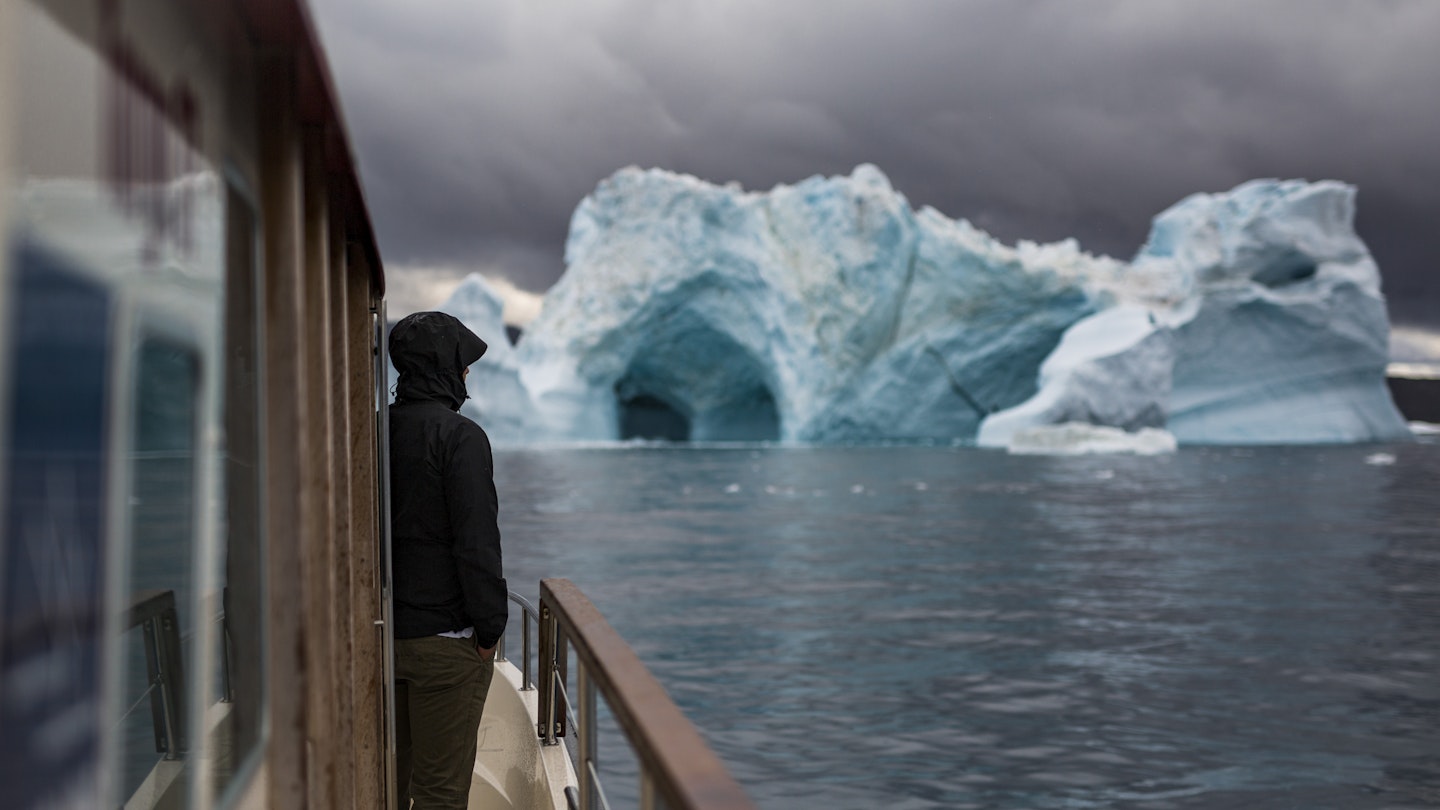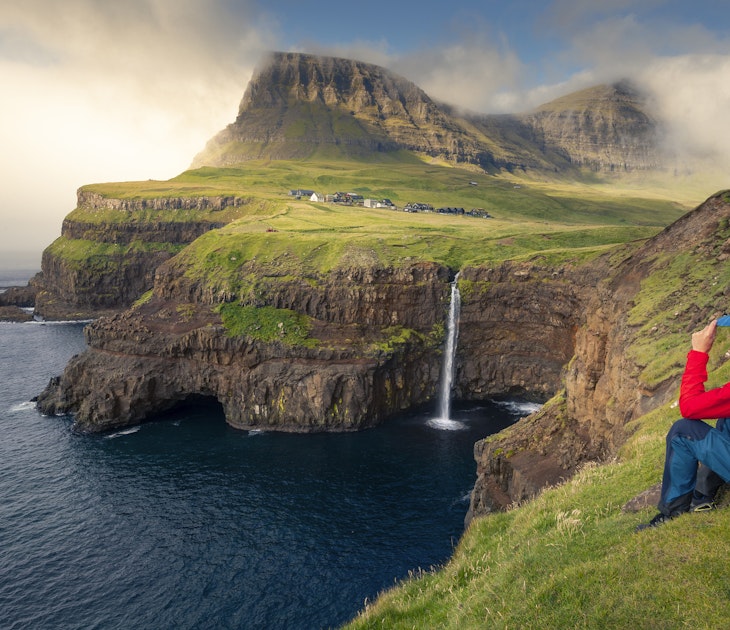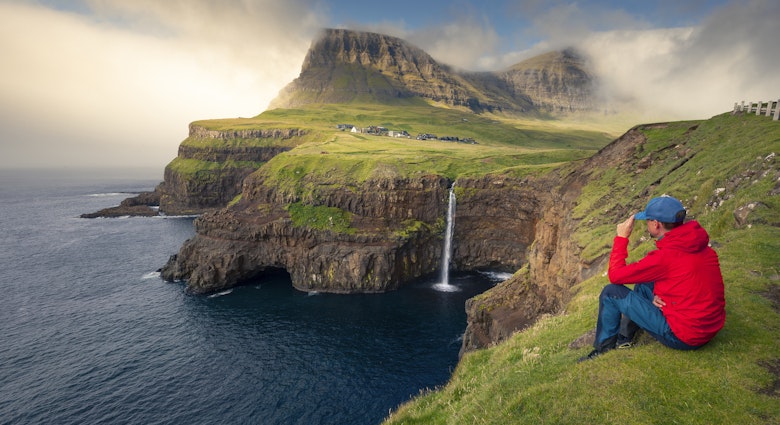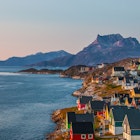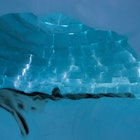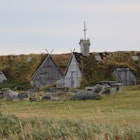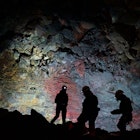Greenland, the world’s largest island, is a country of wild extremes: uninhabitable wilderness at its core, and delightfully warm and charming people living in harmony with it. Climbers come to scale its spectacular sheer rock faces, scientists come to see what the melting ice can tell us of the planet’s future and many visitors come away with a whole new perspective on life.
There’s no question that the must-see attraction for everyone who visits Greenland is ‘big nature,’ from the black peaks that undulate on the horizon, to the great gray-blue ice sheet in the center of the island and the icebergs scattered in the sea around it. Muskox, arctic fox and polar bears roam around, and the northern lights dance in the sky above.
Inhabited since 2,500 BCE, with Viking colonies in the south from the 10th century, Greenland has developed a unique culture and set of beliefs based on its people’s strong relationship with the mountains, ice and sea that surrounds them. It’s impossible not to come away feeling awestruck by what nature can create.

When should I go to Greenland?
Greenland is a huge island with vast seasonal and geographical variations, and its weather can be unstable and unpredictable all year round. Be sure to take out travel insurance in the event of flight cancellations, and keep plans as loose as possible as schedules can change suddenly.
For snow, dog sledding and the northern lights, the best time to visit is from late September to May.
If you are keen to do adventure sports like hiking, climbing or kayaking, the Greenlandic summer is more suitable. This period, from May to September, promises more hours of daylight.

Where should I go in Greenland?
Getting around Greenland is complicated (see below). The best advice is to choose one region to explore, or two at most, and spend a week there. This allows you to see the key natural sights and animals without feeling rushed, meet local people (who can be reticent), and have the flexibility to adapt if plans change due to bad weather.
As an example, you could choose to stay in the Ilulissat ice fjord region, where there are options for hiking, whale watching, exploring Disko Bay and perhaps the ice cap over the course of a week. If you want to follow the Arctic Circle Trail, again, that’s a one-to-two-week trip. Factor in that you’ll likely need to fly via Denmark or Iceland, potentially adding a night to the trip in either direction. And as mentioned, there may be unexpected events due to the weather.
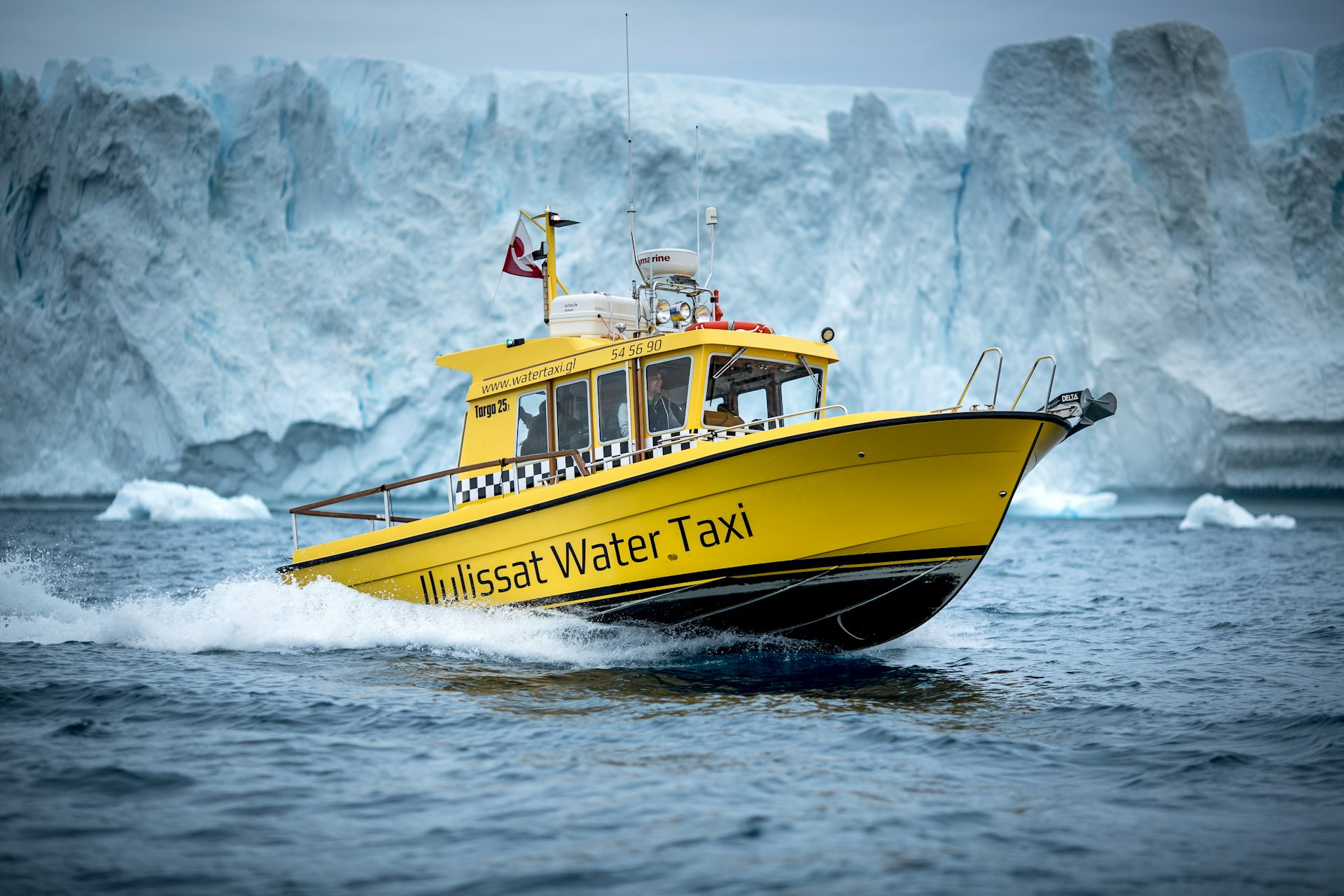
Is it easy to get in and around Greenland?
In early 2025, an extension to Nuuk airport will allow larger planes to land in Greenland, making it easier to reach from international destinations. Until the new runways open, flights to Greenland go via Reykjavik and Copenhagen into the country’s international airports, Nuuk, Kangerslussuaq and Ilulissat. Kulusuk and Narsarsuaq are also entry points from Reykjavik.
Greenland is large and largely without roads. To travel between towns, Air Greenland flies to those with runways and runs helicopters to others. From April to December, the Arctic Umiaq Line runs coastal ferries from Qaqortoq in the south to Ilulissat in the north, with stops along the way. The full journey takes 4.5 days. Other ferries and coastal boats run up the west coast and across South Greenland in summer.
Within towns there are buses, taxis and cars, and you can also walk. It is advisable to book far in advance to secure a place (and for the best rates), and to have clear transport plans when you arrive in Greenland.
Top things to do in Greenland
Be awed by nature and humbled by culture. For the nature part, take a boat from Ilulissat, Nuuk or Qaqortoq and spend a day cruising the ice fjords, marveling at immense blue, white and gray icebergs and encountering all kinds of sea life from humpback whales to dolphins. Hike in the mountains surrounding the small town of Narsarsuaq and admire the ice sheet – you can even camp overnight on it at Camp Ice Cap near Kangerlussuaq.
Then immerse yourself in local culture and discover how people in Greenland really live. Experience the warmth of community and the power of history in a kaffemik, a local coffee morning, in Nuuk or Qaqortoq, or book into a wilderness camp and try Greenlandic glamping, with a side of fishing and foraging, for a true back-to-nature immersion in the country’s outdoors-driven lifestyle.

My favorite thing to do in Greenland
Nature watching in Greenland is off-the-chart amazing. You could spend all day cruising between icebergs and comparing their shapes and colors – and then there’s the wildlife. To see a sliver of a whale's back slip out of the water while you’re on a boat on the way to another town is sensational. The day I saw a polar bear climb a remote coastal cliff and disappear over a ridge remains one of the most memorable days of my life. These sights are framed by seas studded with icebergs, clear blue skies, uninhabited land and dark, jagged mountains, creating the most powerful punch of natural drama I’ve ever seen.
How much money do I need?
Greenland is not a cheap destination, but you can do it on a budget. Flight deals can be found outside the main summer season – a tip is to sign up to Air Greenland’s newsletter. As a general guide, a bed in a youth hostel in Nuuk will cost from around £100 per night, while a hotel will be around £200 per night. Luxury wilderness experiences typically cost at least £250 per night.
In terms of domestic transport, it is typically cheaper to take a boat rather than fly or take a helicopter. Booking in advance can also save money, but what you save in money you lose in time.
Greenland’s food is expensive – expect to spend around £25 for an evening meal in a restaurant – because so much of it has to be flown in. Save money by eating as locally as much as possible and cutting back on greens. A locally brewed beer might cost around £8 for a pint, while a coffee costs around £6. Bring a reusable water bottle as all Greenlandic water is drinkable.
Bring lots of layers, no matter the season
As mentioned, Greenland’s weather is highly changeable all year round, so pack with that in mind. Bring woolen layers, hiking boots, gloves, sunscreen, sunglasses and a snood at the very least. Hiking in jeans and city-style trainers is not recommended.

The northern lights can be seen throughout the year
Typically, northern lights season in Greenland runs from September until April, but check with the region you plan to visit to be sure. It’s possible to see the lights all year round, depending on where in Greenland you are, but you need a dark, cloudless night. The midnight sun takes over from June to July in the Arctic Circle region and April to August in more northerly locations, and then you will experience barely any darkness.
Greenlandic is the official language
Greenlanders speak Greenlandic; Danish is also used and many people, particularly in major hubs, speak English.
Staying safe in Greenland
Weather is one of the key risks in the country, so stay aware of the forecast, carry a GPS with you and know how to use a map. Tell someone where you are going before you set off. Wildlife risks can include polar bears and rabid arctic foxes. Calving icebergs can cause tsunamis and be fatal for those on boats. Travel insurance that covers all the activities you might do in Greenland is a must.
Etiquette notes
Note that the word Eskimo is considered an inappropriate term; Inuit is preferred.

